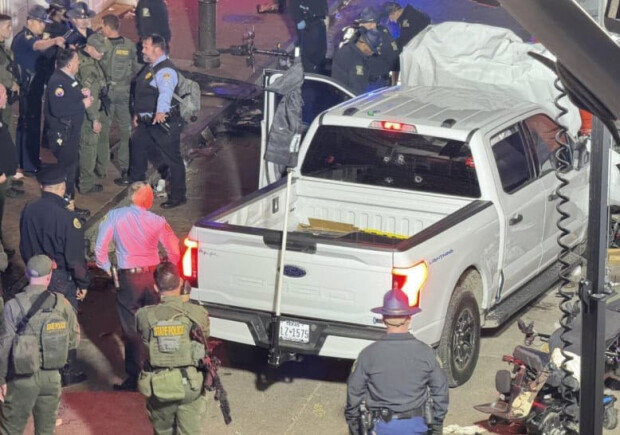US sees rise in vehicle-ramming attacks, instilling fear
US sees rise in vehicle-ramming attacks, instilling fear
Posted January. 03, 2025 08:03,
Updated January. 03, 2025 08:03

The discovery of an Islamic State (IS) flag and explosives in a terrorist vehicle in New Orleans, Louisiana, the U.S., has raised alarms about ‘Vehicle as Weapon (VAW) attacks.’ The concern is that ordinary vehicles could be repurposed as deadly terrorist weapons, instilling fear.
In fact, VAW attacks have been on the rise in recent years. According to the Mineta Transportation Institute (MTI) at San Jose State University in the U.S., 70% of all incidents involving the intentional ramming of a vehicle resulting in loss of life from 1963 to 2019 (a total of 184 incidents) occurred after 2014. The Islamic State (IS), which issued a directive in 2016 encouraging VAW attacks, carried out 17 vehicular attacks worldwide between 2014 and 2017, killing 173 people. Vehicles have also been used in anti-Islamist attacks. Last December, a man from Saudi Arabia drove a sports utility vehicle (SUV) into a crowd at a Christmas market in Magdeburg, Germany, killing five people and injuring more than 200 others.
There are also numerous vehicular attacks that are not motivated by extremist Islam. In Zhuhai, China last November, a 62-year-old man, upset over the division of property following a divorce, drove into a crowd, killing 35 people. In 2017, a white supremacist drove a car into a group of anti-racism demonstrators in Charlottesville, Virginia, killing one person and injuring 36 others.
Vehicular terrorism is on the rise because vehicles are easier to obtain than guns or explosives and are relatively free from security checks. According to The New York Times, the U.S. Federal Bureau of Investigation (FBI) stated in an internal document that “an attacker with limited access to explosives or weapons can use a vehicle to inflict great damage with minimal experience or training.” The British publication The Times also described cars as “the poor man's Weapon of Mass Destruction.”
Some analysts believe that the increase in large-scale outdoor activities since the COVID-19 pandemic has created an environment conducive to VAW attacks. This is because most attacks target the general public rather than high-ranking government officials.
In response, many cities are installing barricades and other barriers to prevent vehicular terrorism, according to The Associated Press. However, these measures have their limitations, as they can create transportation inconveniences. “We had more than 300 police officers on New Year's Eve, but the perpetrator intentionally bypassed the barricades,” New Orleans Mayor LaToya Cantrell said at a press conference. In the German Christmas market incident, the attacker used a lane reserved for ambulances to drive into crowds of people.
Jeong-Soo Hong hong@donga.com







